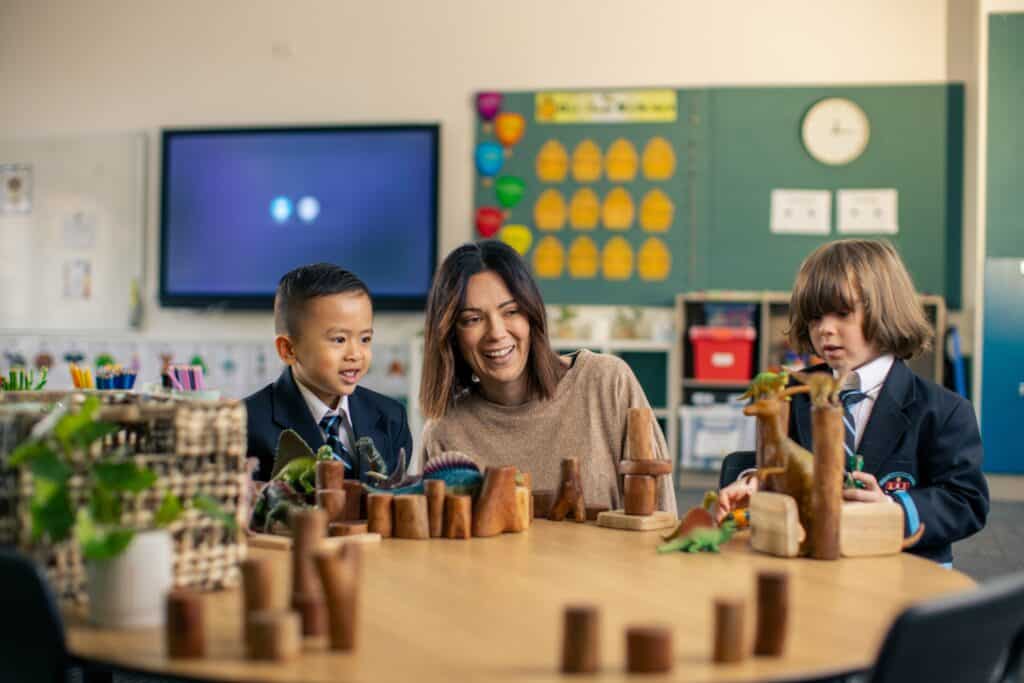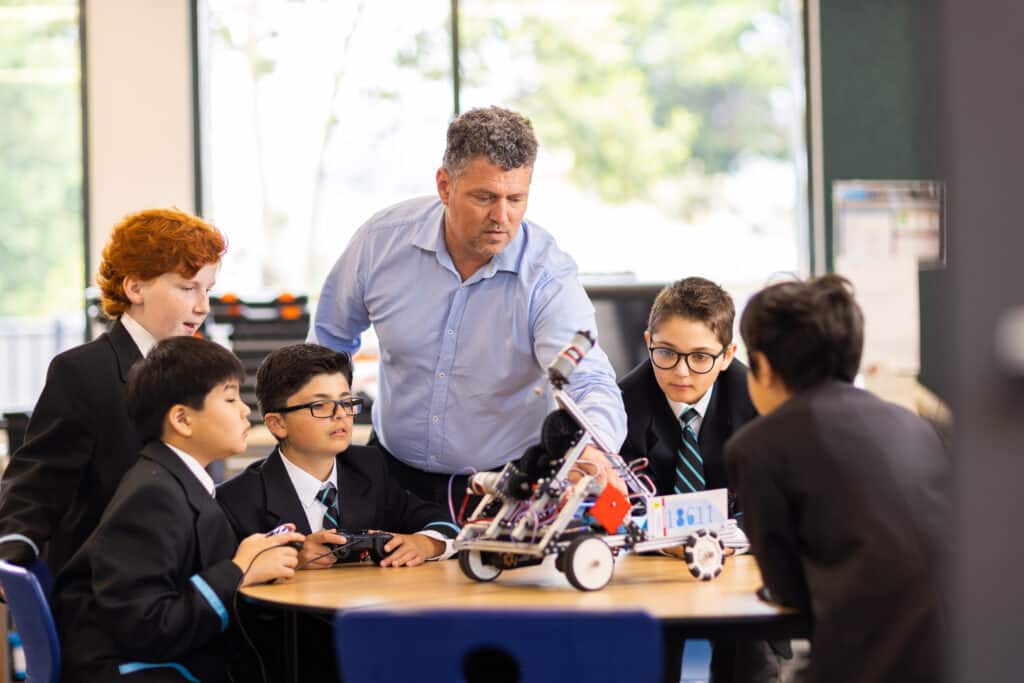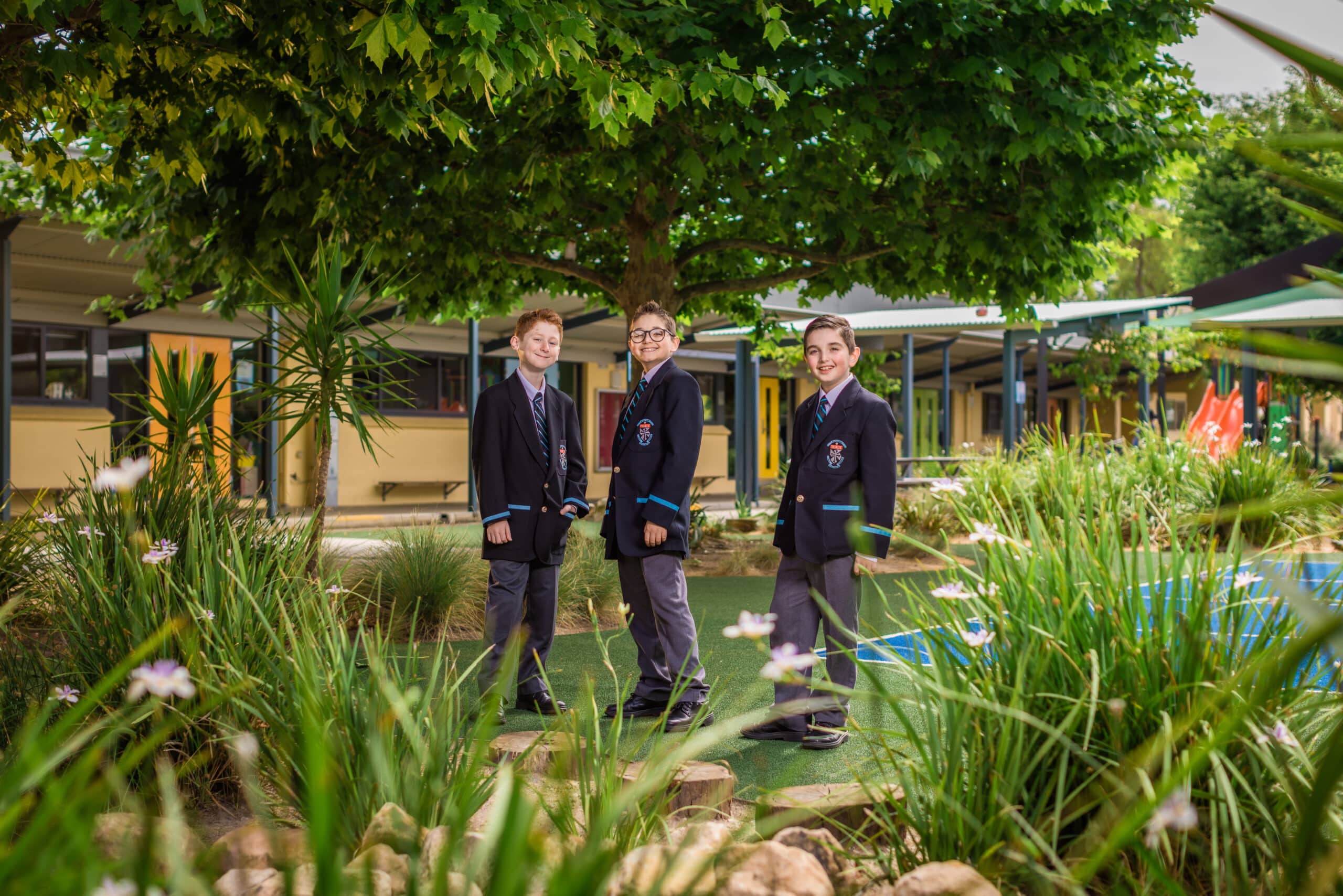When I grow up, I’m going to be a scientist, sports star, teacher, astronaut, fireman, doctor, dinosaur. I want to be a superhero who will help people.
At Blackfriars, we aim to instill in boys the confidence to be so many things but, more importantly, to first be themselves.
The Primary School at Blackfriars provides a nurturing, student-centred learning environment for the critical years of a boy’s educational, social, emotional, spiritual and physical development. It offers a diverse, challenging and creative curriculum to develop boys’ capabilities to live and participate in a digital and global society.
Primary School boys undertake specialist subjects including STEM, Japanese, Art, Music and Physical Education with additional teacher support available in areas including Literacy, Numeracy, Learning Enrichment and English as an Additional Language (EAL).
Assessment at the beginning and end of the year allows us to track the educational needs of the boys and measure the improvements gained in a calendar year.
Our staff pride themselves on getting to know each boy’s interests through our Pastoral Care program. This program includes the opportunity to mix with boys and teachers from the Middle and Senior Schools through our integrated House system. Teachers are involved in the boys’ co-curricular activities including school camps starting in Year 4. Regular communication with families about their boys and upcoming events provides a crucial link to home and supports the partnership between family and school.
The Blackfriars Primary School buildings provide indoor and outdoor learning areas for active boys who need space to move, think and do. The classrooms have an abundance of natural light, contemporary teaching equipment, secure access to the latest information and communication technologies and to a safe and sun-sheltered play area.
Curriculum overview
The Blackfriars Primary School curriculum comprises the key learning areas of Religious Education, STEM, Humanities, The Arts, Languages, and Health and Physical Education. The Religious Education program is central to the curriculum and is informed by the Crossways and Made In The Image of God programs. The Keeping Safe: Child Protection Curriculum is interwoven through all learning areas. All other learning areas are informed by the Australian Curriculum.
Curriculum guide
Learn more about the full curriculum offered at Blackfriars, including individual subject detail, learning area pathways from Reception to Year 12, learning support and enrichment programs. See the online guide here.

The Primary School at Blackfriars provides a nurturing, student-centred learning environment for the critical years of a boy’s educational, social, emotional, spiritual and physical development.
Specialist teaching and support
- STEM (Science, Technology, Engineering & Mathematics)
- Physical Education
- Japanese
- Music
- Visual Art
- Teacher Librarian
- Learning Enrichment
- Literacy and Numeracy
- English as a Second Language

Pedagogy
In each Primary School classroom, there is a high level of support for students to engage in their learning. Teachers set high expectations for every boy’s progress and individual targets for improving classroom performances. They implement a variety of teaching methods that have been shown to be effective in promoting successful learning for boys. These include:
- Providing clear learning objectives
- Creating a positive classroom environment
- Providing opportunities for collaborative work
- Making links to areas outside the specific lesson
- Supporting and promoting discussion for deeper understanding
- Providing sufficient opportunities for boys to reflect on their learning
- Providing opportunities for project-based work with teachers facilitating kinasthetic (hands-on) learning
Teachers link boys’ learning to prior knowledge and build effective connections by combining their own knowledge of specific subject matter and their knowledge of the cognitive, social and cultural backgrounds of the students.
Assessment
Active participation in class activities is expected both individually and as a member of a group. We assess in real time using SeeSaw for Reception to Year 3 and SEQTA for Years 4 to 6. These platforms allow boys and parents to engage with assessment at the time of completion and keep up-to date with their progress.
Assessment of student learning and growth may include the following:
- Diagnostic testing
- Oral presentations
- Classroom observation
- Essays
- Interviews
- Performance tasks
- Exhibitions and demonstrations
- E-journals
- Teacher-created tests
- Rubrics
- Self- and peer-evaluation

